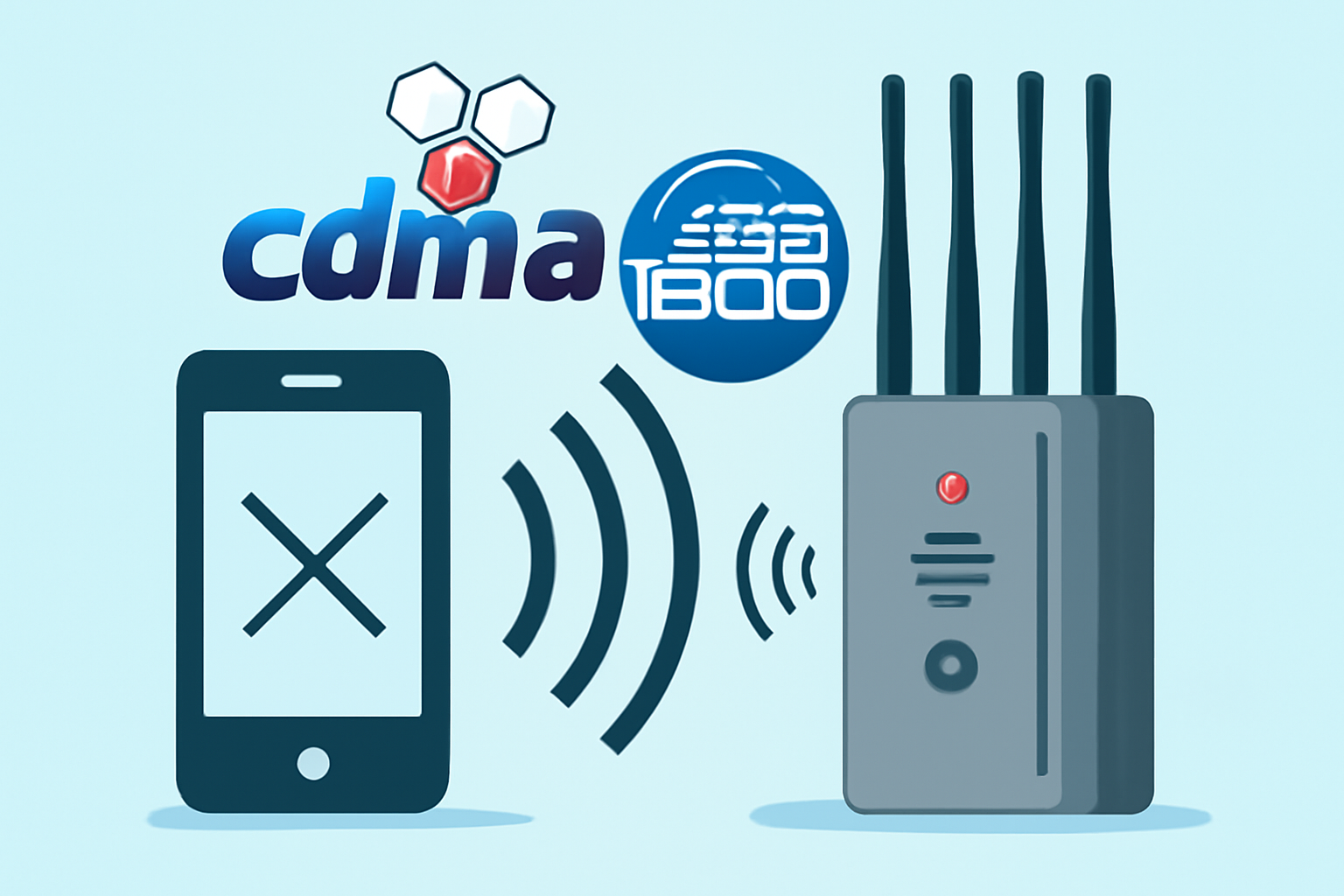In modern life, the devices we use every day have never made us stop and think about how they work. Refrigerators, TVs, radios, and even our mobile phones are common in our lives. With the continuous development of technology, in addition to these common devices, some devices specifically used to manage communication signals have also quietly entered our lives, such as CDMA jammers and PCS jammers. Although they are not tools that everyone needs, they can play a huge role in certain specific occasions. Today, we will take a closer look at these two jammers and their applications in specific scenarios.
What is CDMA? Why is interference needed?
CDMA (Code Division Multiple Access) is an important technology in modern communication systems and is widely used in mobile communications. Unlike GSM, CDMA uses a method of dividing the signals of all users into multiple chips to allow multiple users to communicate simultaneously in the same frequency band, greatly improving the efficiency of spectrum use. However, due to its complexity, CDMA signals may interfere with other frequency bands, especially in places where people gather. The interference of mobile phone signals not only affects personal use, but may also affect other people around.
In certain specific scenarios, CDMA jammers can play an important role. Imagine that in a theater or lecture hall, suddenly mobile phones are ringing everywhere, or someone starts talking loudly, which is bound to destroy the atmosphere on the scene. At this time, the CDMA jammer comes in handy. It emits interference signals so that mobile phones within the coverage area cannot receive normal signals, thereby preventing mobile phone ringing and calls from interfering with normal order.
How CDMA jammers work
The core technology of CDMA jammers is that they can emit signals in the same frequency range as mobile phones. Simply put, the jammer “mimics” the signal of the mobile phone, but this signal itself has no information content, just to disrupt the normal communication of the mobile phone. When the mobile phone tries to connect to the base station, it encounters the signal from the jammer, so that the connection cannot be established normally, and finally the mobile phone cannot make calls or receive signals. This “white noise” phenomenon puts the mobile phone in a “dead zone” and cannot communicate at all.
What is PCS? Will it be interfered with?
In addition to CDMA, PCS (Personal Communications Service) is also a common communication standard, mainly used in the United States. PCS usually operates in the 1900 MHz band and was originally designed to make up for the shortcomings of the 1800 MHz band. Although PCS is somewhat similar to the GSM standard, it also has some unique features, especially in the application of wireless communication and mobile networks.
Since the area covered by PCS signals is different from that of CDMA and GSM, PCS jammers also have similar functions, especially in some occasions with high requirements for information security. For example, in some university examinations, PCS jammers can prevent students from cheating through mobile phones and ensure the fairness of the examinations. In addition, it can also prevent sensitive information from being leaked in meetings and protect business negotiations and other confidential activities.
How PCS jammers work
PCS jammers are similar to CDMA jammers in that they create a more powerful interference signal to cover the mobile phone communication band within a certain range. Specifically, PCS jammers emit interference waves that are stronger than mobile phone signals and cover the communication frequencies around the device. Mobile phones with devices within this range will not be able to establish a connection with the network, thereby disconnecting communications and preventing any information from being transmitted through the mobile phone.
Application scenarios: How to use signal jammers?
Although not everyone needs CDMA and PCS jammers, they are undoubtedly very effective tools in some specific scenarios. Here are some typical application scenarios:
- Meetings and business negotiations: In high-security business negotiations, it is crucial to prevent external eavesdropping and information leakage. PCS jammers can effectively block unauthorized communications and ensure that all conversations are only known to on-site personnel.
- Exam and examination room management: In schools or examination venues, CDMA or PCS jammers can effectively prevent students from cheating through mobile phones and ensure the fairness of the exam.
- Public places: For example, in theaters and cinemas, using CDMA jammers can prevent mobile phone ringtones and calls from interfering with the audience’s experience and maintain order on site.
- Military and security places: In some military or security environments, PCS or CDMA jammers can prevent external communication interference and prevent the enemy from using mobile phones and other devices to transmit information.
Although CDMA and PCS jammers are not common in daily life, they play an irreplaceable role in some key scenarios. From safeguarding public order to protecting information security, the application of these devices provides us with more choices and guarantees. In the future, as technology advances, jammers may become more intelligent, bringing us more convenience and protection.

